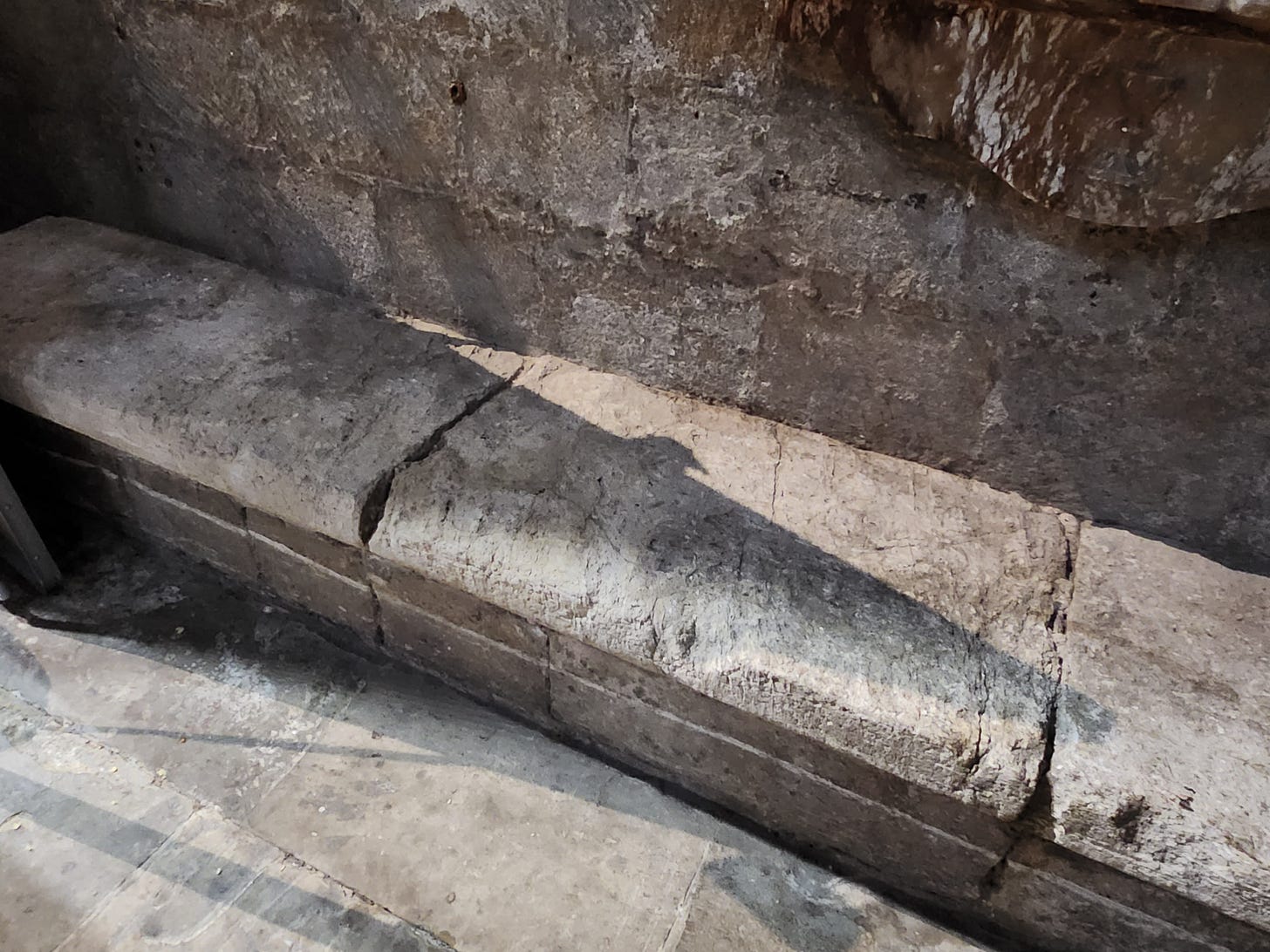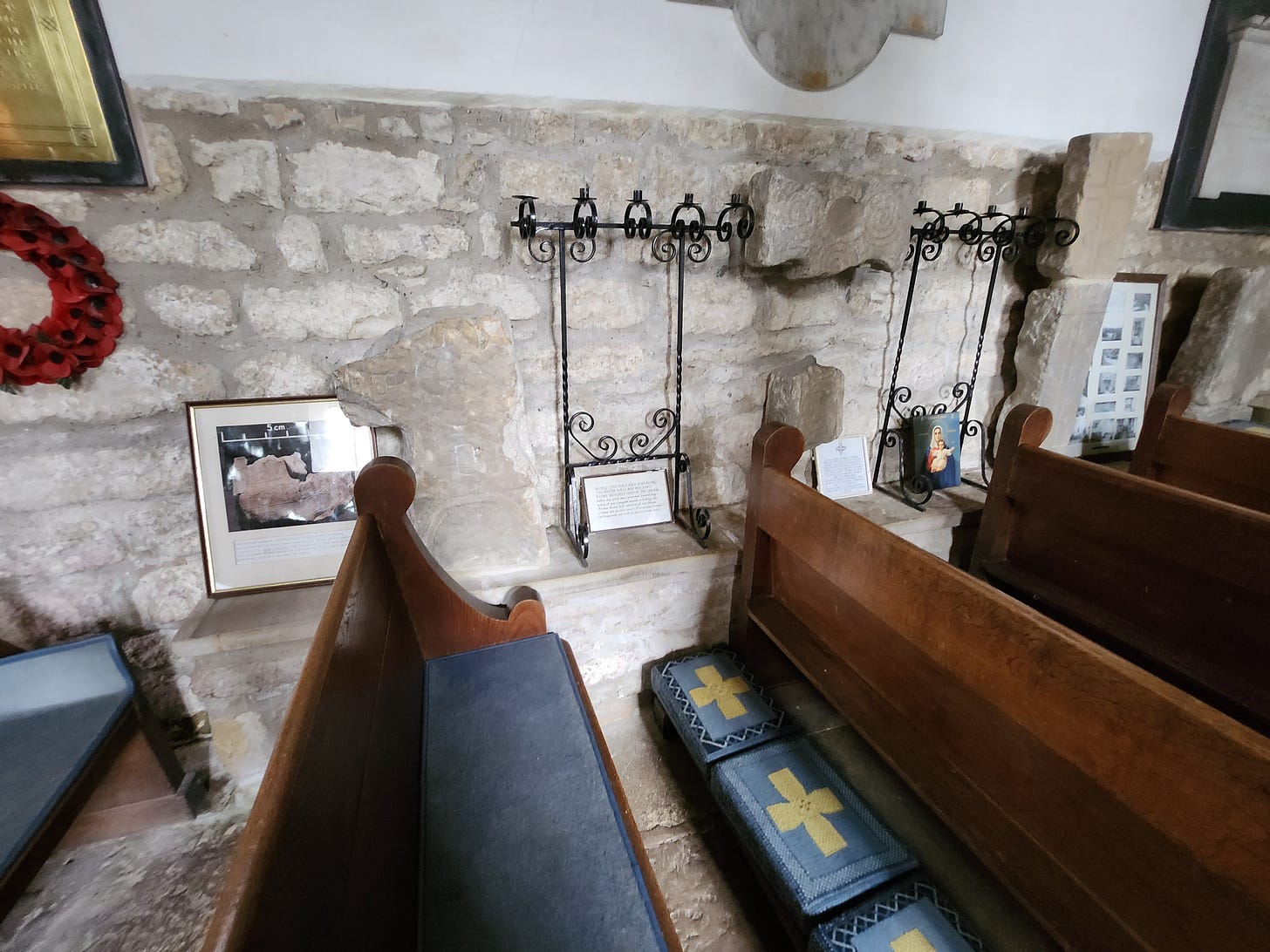In my church crawling activities I come across lots of pews, but it’s easy to forget that these are a recent innovation. Until the 15th century there was little seating in the nave for the congregation; the only permanent seating provided was for the priests and acolytes in the chancel, who spend long hours in the church saying the office and Mass.
Most of the congregation would have stood, or knelt at the appropriate times. We do have some medieval stone benches which were often placed around the edge of the walls; here’s one in a transept at Ripon Cathedral. Larger churches often had them, for the infirm or elderly, but they have frequently been removed in later renovations.
There isn’t as much evidence for seating in smaller churches but in St Gregory Kirkdale, there is this stone bench, judged to be part of the Anglo-Saxon construction of the church. The top has been replaced, but the foundations are original and there is one on each side of the church. So they are reasonably assumed to have been seating.
There are also seats constructed around the base of pillars, which must have been rather more common than we see now. I have come across a couple of these but failed to take good photos at the time, sorry!
Of course people could bring in wooden stools or rudimentary chairs to sit on, but naturally we don’t have any of those surviving. It seems likely that rich people would have servants bring chairs for them; we do see evidence of these and prie-dieus in medieval paintings. Some may have had side chapels or storage at the church to keep them in. It’s impossible to be sure.
So people would stand in the nave, though they were, at least in the early medieval period, separated by sex. There were two ways of doing this: one is that the women stood at the west end of the nave, with the men at the east end in front of the chancel (the arrangement we see in Durham Cathedral); the other is that women stood on the north side of the church and men on the south. As we saw recently in looking at Anglo-Saxon towers, it is also possible that in very early times, men and women were on separate floors. We have evidence for the first two of these practices from documentary records, and the position of Mary and John on the rood screen are often seen to reinforce it - Mary on the left/north (when looking towards the altar) and John on the south. In his book “Going to Church in Medieval England” (which I heartily recommend), Nicholas Orme gives some examples and evidence for each of these.
Keep reading with a 7-day free trial
Subscribe to Incola ego sum in terra to keep reading this post and get 7 days of free access to the full post archives.





